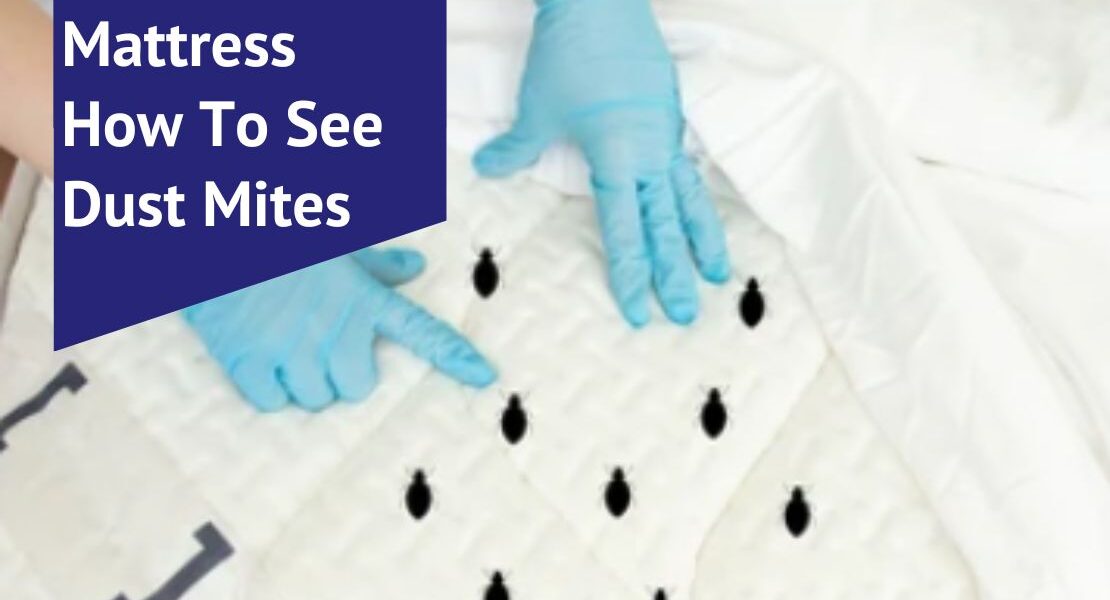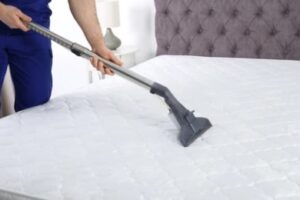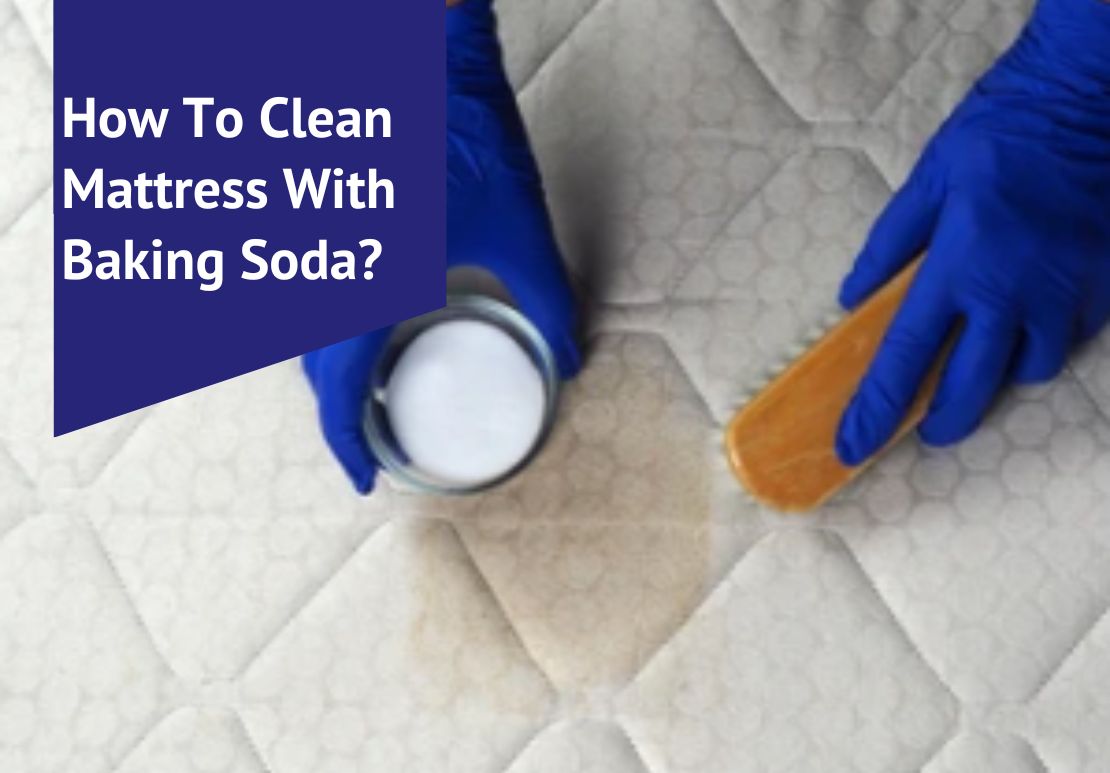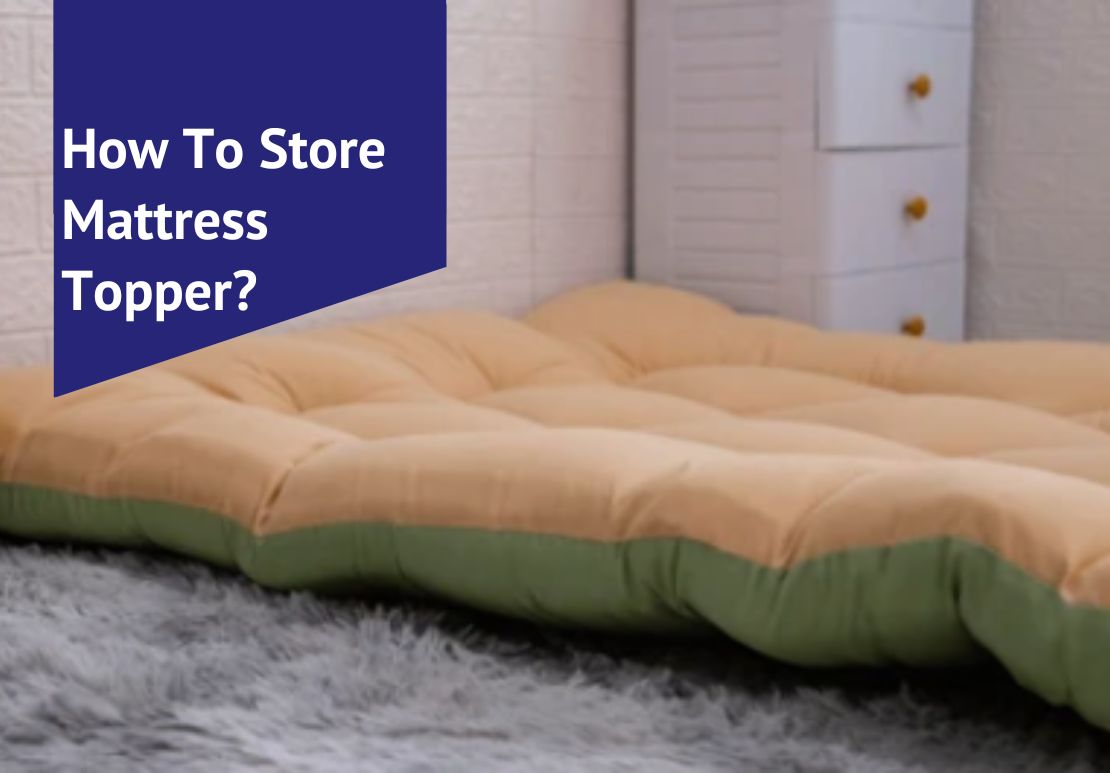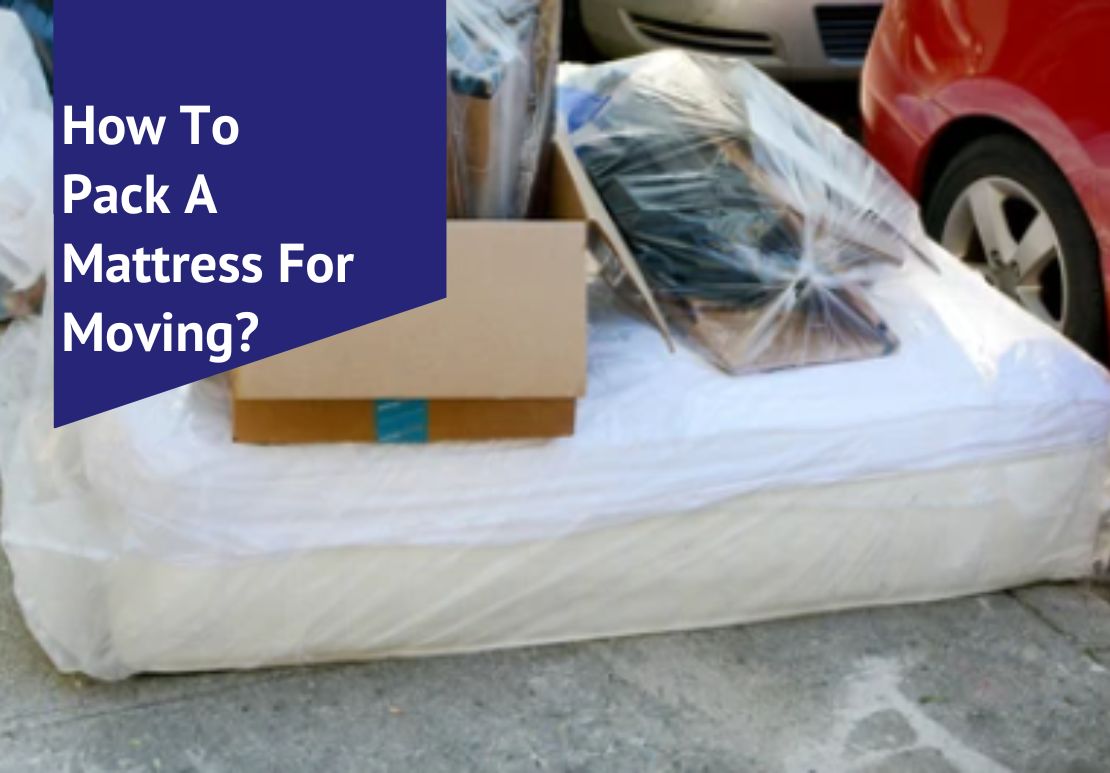Discovering dust mites living in your mattress can be quite unsettling. These tiny creatures, invisible to the naked eye, thrive in warm and humid environments like bedding. This article offers practical guidance on identifying and eliminating dust mites from your mattress, ensuring a cleaner sleep space.
Table of Contents
Key Takeaways
- Dust mites are microscopic pests that live in warm, humid environments like mattresses, feeding on dead skin cells, with signs of their presence being sneezing and itchy eyes. This can also cause problems for people who are allergic to dust mites.
- To get rid of dust mites from a mattress, wash bedding and clean your mattress regularly in hot water above 130°F, vacuum using a HEPA filter, sprinkle baking soda to absorb moisture and odor, and dispose of old bedding correctly.
- Prevent future infestations by keeping the bedroom’s humidity below 50%, using protective covers for mattresses and pillows that block out mites, and opting for alternative materials like natural latex, which is less hospitable to dust mites.
What Are Dust Mites?
Dust mites are microscopic, eight-legged insects that thrive in warm and humid environments. They feed on dead skin cells shed by humans and pets and can be found in bedding, upholstered furniture, and carpets.
Their presence can trigger allergic reactions in some people.
Description and behavior
Dust mites are tiny creatures barely visible to the naked eye, thriving in warm, humid environments. These minuscule pests feed primarily on dead human skin cells shed by humans and pets, often making their homes in household textiles like mattresses, upholstered furniture, and carpeting.
Within these cozy confines, they reproduce quickly and release allergens that can provoke allergic reactions in sensitive individuals.
In terms of behavior, dust mites seek out areas with high humidity since moisture is critical for their survival. Mattresses provide an ideal habitat due to the combination of human warmth and perspiration that occurs nightly during sleep.
Despite being microscopic, they contribute significantly to home allergen levels; a single gram of dust can contain up to 19,000 mites. Their waste products contain proteins that many people are allergic to—breathing these in can lead to symptoms such as sneezing and watery eyes among those with dust mite allergies.
Common places to find them
Dust mites thrive in cozy, moist environments where they can feed on dead skin cells. Your mattress is a favorite spot for these tiny pests because it’s often dark, warm, and humid—a perfect breeding ground.
They burrow deep into the fibers of your bedding, pillows, and even stuffed animals. Mites also love to settle in upholstered furniture and carpeting throughout the home.
Humidity plays a key role in their survival; therefore, areas with high humidity are hotspots for dust mite populations. Regular vacuuming of carpets and furniture can help reduce their numbers.
Protect your sleep health by keeping bedrooms clean and well-ventilated to discourage dust mite infestations from taking hold.
Signs of Dust Mites in a Mattress
– Physical indicators, such as visible dust or small white specks on the mattress, may suggest the presence of dust mites.
– Allergy symptoms of a dust mite allergy, including sneezing, coughing, and itchy eyes upon waking up, can also indicate their presence in the mattress.
Physical indicators
Tiny black or brown specks on your mattress can be a telltale sign that dust mites have turned your bed into their home. These small particles are debris from the dust mites, and spotting them is often the first physical indicator of an infestation.
You might also see signs of their presence if you experience itchy skin at night, which suggests these microscopic critters could lurk in your bedding.
Regular inspection of mattresses and pillows for these indicators is crucial, especially since a single mattress can harbor hundreds of thousands to millions of dust mites.
Keep an eye out for fine dust build-up around seams and crevices; this can also point to a high number of mites living within. Noticing such evidence prompts immediate action to maintain bedroom hygiene and ensure healthy sleep surroundings free from allergens.
Symptoms of a dust mite allergy
Itchy skin and congestion can be more than physical indicators of dust mites in your mattress. For individuals with a dust mite allergy, these symptoms often manifest as persistent sneezing, a runny or stuffy nose, red or teary eyes, and even frequent coughing.
In some cases, itching around the mouth and throat alongside postnasal drip may also occur due to exposure to dust mites. These allergens can exacerbate asthma symptoms such as wheezing, chest tightness, and shortness of breath.
Dust mite proteins are known to trigger allergic reactions in sensitive individuals.
How to Remove Dust Mites from a Mattress
To remove dust mites from a mattress, it’s essential to wash and dry bedding regularly, vacuum the mattress thoroughly, use baking soda to eliminate odors and deodorize the fabric, and dispose of old bedding that may be harboring dust mites.
Washing and drying bedding
To effectively eliminate dust mites from bedding, homeowners should:
- Wash bedding in hot water (over 130°F) to kill dust mites and remove allergens.
- Dry bedding thoroughly in a hot dryer to eliminate dust mites and their eggs.
- Use allergen-proof covers for pillows and mattresses to protect against dust mites.
Vacuuming the mattress
To eliminate dust mites from your mattress, start by vacuuming the entire surface using a vacuum cleaner with a HEPA filter to capture even the smallest particles.
- Use the upholstery attachment or a handheld vacuum to thoroughly clean all sides of the mattress, paying special attention to seams and crevices where dust mites may hide.
- After vacuuming one side, flip the mattress and repeat the process to ensure all areas are covered.
- Focus on removing any visible debris or buildup, as these could be signs of dust mite presence.
- Vacuum underneath the bed as well, since dust mites can accumulate in this area.
- Once complete, empty the vacuum cleaner immediately into a sealed bag and dispose of it outside to prevent dust mites from spreading back into your home.
Using baking soda
To remove dust mites from a mattress, homeowners can use baking soda as an effective natural remedy. Baking soda helps to neutralize odors and absorb moisture, making it an excellent addition to the cleaning routine. Here’s how to use baking soda to eliminate dust mites:
- Sprinkle a generous amount of baking soda over the entire mattress surface, ensuring it covers all areas where dust mites may be present.
- Gently massage the baking soda into the mattress’s fabric using a soft-bristled brush or your fingertips to ensure it penetrates deeply.
- Leave the baking soda on the mattress for at least 15 minutes to absorb moisture and neutralize unpleasant odors.
- After letting it sit, thoroughly vacuum the mattress using a vacuum cleaner with an upholstery attachment to remove the baking soda and any dust mites and their debris.
- Repeat this process regularly as part of your mattress maintenance routine to keep dust mites at bay and maintain a clean sleeping environment.
Dispose of old bedding.
After using baking soda to clean the mattress, it’s essential to dispose of old bedding properly. Here are steps homeowners can take to ensure the removal of old bedding is thorough and effective:
- Evaluate the condition: Examine old bedding for wear, tear, or damage that may indicate excessive dust mite infestation.
- Replace worn-out items: Dispose of pillows, comforters, and mattress protectors that show visible signs of wear and tear beyond repair.
- Wash reusable items thoroughly: Launder washable items like sheets, pillowcases, and blankets in hot water (130°F or higher) before use or replacement.
- Vacuum non-washable items: For non-washable items like decorative pillows or stuffed animals, vacuum them thoroughly before considering disposal.
- Consider allergy-friendly alternatives: Explore hypoallergenic options when replacing old bedding to minimize potential allergens in the sleeping environment.
- Seal and discard properly: Place discarded bedding in sealed bags before disposing of it to prevent the spread of dust mites and their debris.
Final Thoughts and Tips
To ensure a dust-mite-free mattress, it’s important to establish a regular cleaning routine that includes washing bedding in hot water, using protective covers, and keeping humidity levels low.
Seeking professional help for deep cleaning and considering alternative mattress materials can also be beneficial in preventing dust mites.
Frequency of cleaning
Regular cleaning is essential to keep dust mites at bay. Homeowners should aim to vacuum their mattresses weekly, especially if someone suffers from dust mite allergies.
Washing bedding in hot water every one to two weeks and using protective covers can help prevent dust mites from proliferating. Lowering humidity levels in the bedroom is also crucial; a dehumidifier can effectively achieve this.
Additionally, seeking professional cleaning services occasionally can ensure a thorough removal of dust mites and their allergens.
Seeking professional help
If dealing with dust mite infestation seems overwhelming, homeowners can seek professional help. Professional mattress cleaners have the expertise and specialized equipment to eliminate dust mites and their allergens effectively.
Additionally, they may offer services like deep steam cleaning that can thoroughly sanitize mattresses and bedding, providing a long-term solution to prevent future infestations.
Professional help ensures a comprehensive approach to tackling dust mites in mattresses, offering peace of mind for those struggling with allergies or concerned about hygiene. Moreover, professional cleaners can provide valuable insights on maintenance practices and alternative mattress materials that can mitigate dust mite issues in the long run.
Alternative mattress materials for dust mite prevention
While seeking professional help can effectively combat dust mites, homeowners should also consider alternative mattress materials that can aid in preventing dust mite infestations.
One option to explore is investing in mattresses made from natural latex, as this material is naturally resistant to dust mites and mold. Additionally, considering a mattress with a hypoallergenic cover or utilizing mattress encasements specifically designed to block out dust mites can provide an extra layer of protection against these microscopic pests.
By incorporating these alternative materials into their bedding choices, homeowners can take proactive steps to create a less hospitable environment for dust mites and reduce the risk of allergic reactions due to dust mite exposure.
Conclusion
In conclusion, maintaining a clean and hygienic mattress prevents dust mites and the associated allergies. Regular washing of bedding in hot water, lowering humidity levels in the bedroom, and using protective covers are effective preventive measures.
It’s essential to vacuum the mattress regularly and consider alternative materials that deter dust mite infestation. Seeking professional help for thorough cleaning or adopting natural remedies can also contribute to a healthier sleeping environment free from dust mites.
Frequently Asked Questions
How can I see if my mattress has dust mites?
You can see dust mites using a magnifying glass to check for tiny white bugs, bed bugs, or waste particles on the mattress surface.
Can I eliminate dust mites from my mattress completely?
No, it's not possible to eliminate dust mites, but regular cleaning and using allergen-proof covers can help reduce their presence.
What signs indicate there might be dust mites in my mattress?
Signs of potential dust mite presence include experiencing allergies like sneezing, stuffy nose, or itchy eyes while lying on the bed.
How often should I clean my mattress to control dust mites?
To minimize dust mite population, it is recommended to wash bedding regularly and vacuum the mattress at least every few months.
Can air purifiers help in reducing dust mite presence in mattresses?
Yes, air purifiers with HEPA filters can help capture airborne allergens, including some of the microscopic particles shed by dust mites.

